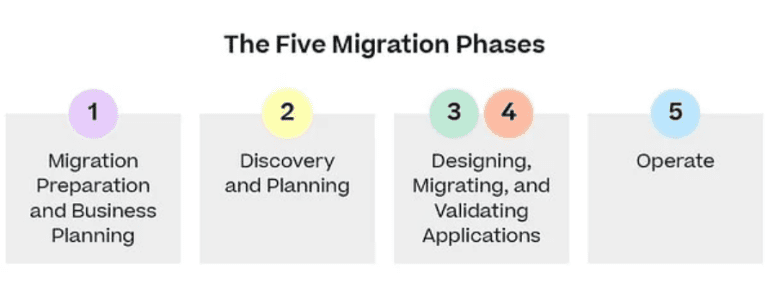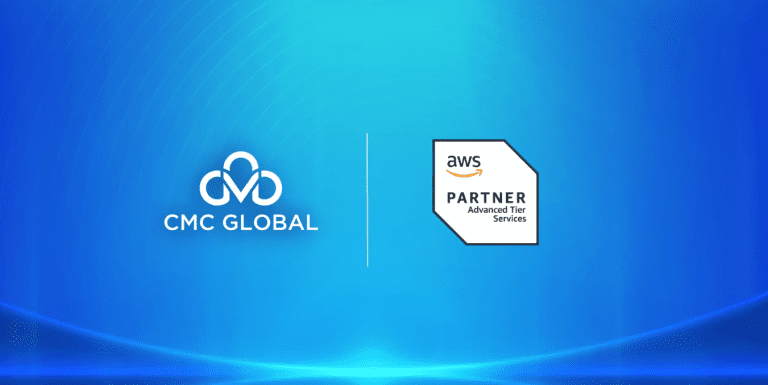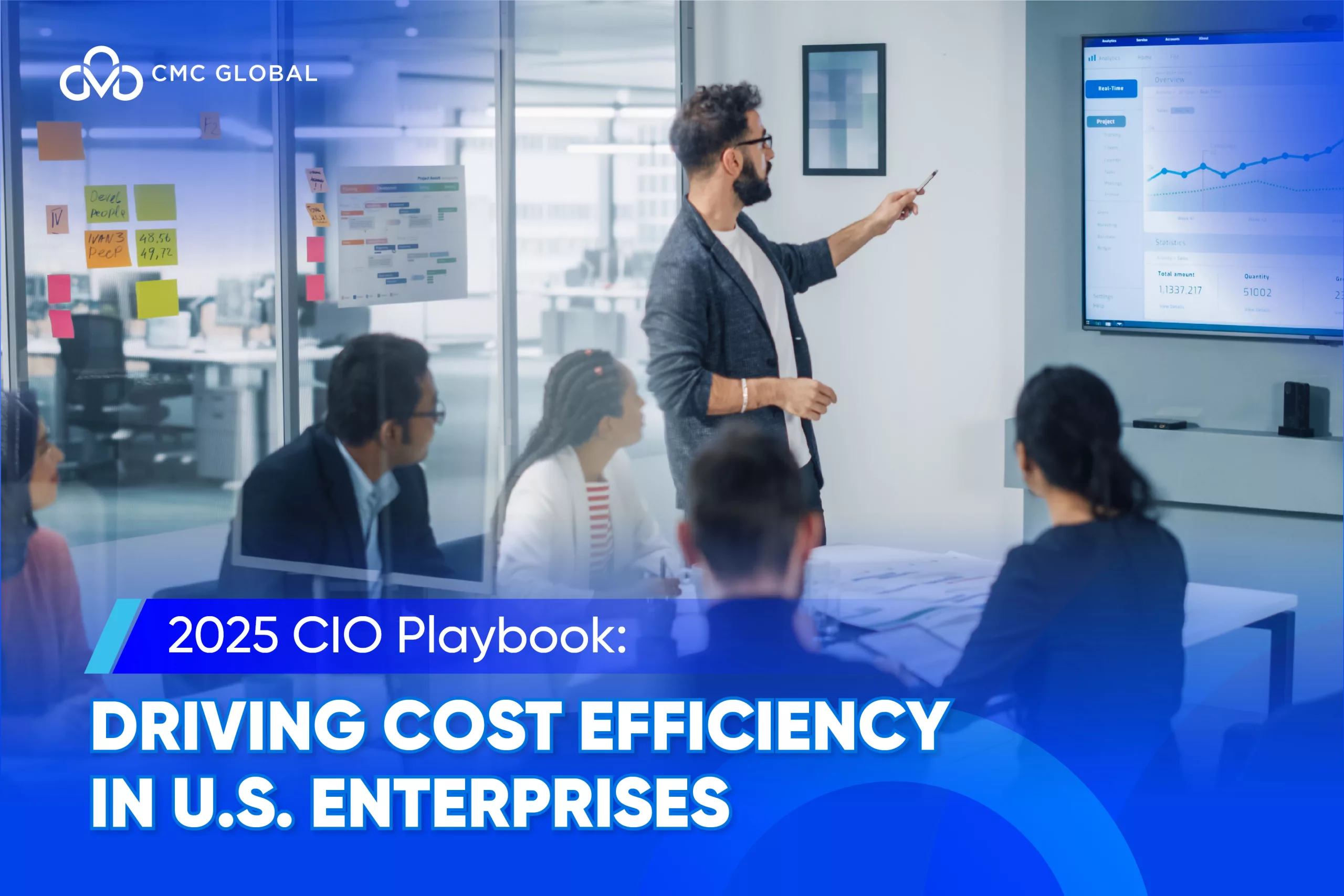Migrating to the AWS cloud offers transformative benefits, from enhanced scalability to cost savings. This guide explores key strategies and practical tips to ensure a smooth transition, helping your business harness the full potential of cloud computing. Dive in to learn how to effectively plan and which strategy is suitable for your cloud migration journey.
5 AWS Cloud Migration Phrases
Amazon’s cloud migration guide details five phases for transitioning to the AWS cloud.

Phase 1: Migration Preparation and Business Planning
Understand your current situation, including your existing application architecture, challenges, and business goals. Develop a business case for migrating to Amazon by defining your objectives—whether it’s to reduce costs, enhance scalability, or improve reliability. Based on these goals, identify which applications need to be moved to the cloud.
Phase 2: Discovery and Planning
With your goals in mind, assess your IT portfolio and decide on migration strategies for each application (see the next section for details). Familiarize yourself with AWS migration tools such as Server Migration Service (SMS), Database Migration Service (DMS), and Amazon DirectConnect to determine which are suitable for your needs.
Phase 3 & Phase 4: Designing, Migrating, and Validating Applications
Develop a comprehensive migration plan for each application. Begin with a few applications as a Proof of Concept to see how the migration strategies and tools work in your environment. Once you have validated these strategies, secure buy-in from stakeholders and proceed with a full-scale migration plan.
Phase 5: Operate
As applications transition to the cloud, start operating them within AWS and decommission the old on-premises versions, unless you choose a hybrid model. Use your experience from the already migrated applications to streamline the process for additional applications you’ll need to migrate.
With a grasp of the basic migration process, let’s explore six alternative strategies to determine if and how to migrate each of your applications to the cloud.
Read more: Working With An AWS Advanced Tier Services Partner: What’s In It For You?
6 AWS Cloud Migration Strategies
Amazon suggests six methods for migrating on-premises applications to the cloud, summarized in the image below. For each application or workload, it’s crucial to determine the most suitable cloud migration strategy.
#1 Rehost (“lift and shift”)
This strategy involves moving applications as-is from the on-premises environment to the cloud using tools like Server Migration Service (SMS) or manual processes.
- Suitable for large legacy migrations and lack of cloud technology skills.
- Pros: Simpler migration process without changes to business processes, faster time to market.
- Cons: Less flexibility, inefficient use of cloud resources, and challenging to extend or modify applications.
#2 Replatform (“lift, tinker, and shift”)
This approach involves moving applications almost as-is but replacing certain components to leverage AWS services. For instance, you might move a legacy application but replace its self-hosted database with Amazon Relational Database Service (RDS).
- Suitable for: Conservative migrations that require stability but are open to experimenting to gain more cloud benefits.
- Pros: Relatively quick migration with minimal integration and testing required.
- Cons: Limited ability to fully leverage cloud benefits.
Repurchase (“drop and shop”)
This strategy entails replacing the application entirely with Amazon or cloud services. For example, discontinuing the license for an on-premises ERP system and adopting the same ERP system as a service from the AWS Marketplace.
- Suitable for: Projects willing to change the existing license model and transition to a completely new application.
- Pros: Access to an improved feature set compared to legacy infrastructure and enhanced ability to leverage cloud capabilities.
- Cons: Potentially high costs and the need for the organization to adapt and rebuild processes around the new system.
Refactor/ Re-architect
This approach involves completely overhauling an application to rebuild it for a cloud-native environment.
- Suitable for: Projects with a strong business need for enhanced scale, performance, or features that aren’t possible on-premises.
- Pros: Offers maximum flexibility and efficiency, allowing you to fully utilize cloud capabilities.
- Cons: This is the most expensive option and often requires re-architecting and rebuilding the application or significant parts of it from scratch. It will likely necessitate changes to enterprise business processes and involve extensive testing.
Retire
Identify applications that are no longer useful and can be decommissioned instead of migrated to AWS. This frees up resources for more valuable applications that can benefit from the cloud.
Retain
Some applications may not be suitable or ready for cloud migration. These can be retained on-premises, either permanently or at least during the early stages of the migration project.
After selecting a strategy and beginning the migration to AWS, you’ll encounter various practical challenges. Below, we briefly discuss some common challenges and suggest ways to address them.
Consider going cloud native?

Optimizing retail performance in today’s dynamic market requires strategic partnerships that harness cutting-edge technology to drive efficiency and customer satisfaction. By collaborating with an AWS Advanced Tier Services Partner like CMC Global, retailers can streamline operations, optimize the supply chain, deliver personalized experiences, and stay agile in an ever-changing market, ultimately driving growth and success in the retail industry.
CMC Global’s expertise in cloud solutions and its track record in enabling businesses to harness the power of modern technology aligns well with the retail sector’s evolving demands. By choosing CMC Global as a partner, retailers can unlock the following benefits to improve their retail performance:
- Scalable infrastructure
- Cost Efficiency
- Supply Chain Optimization
- Data Analytics and Insights
- Personalized Customer Experiences
Contact us for further consultation.




